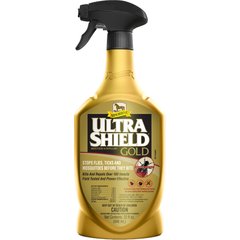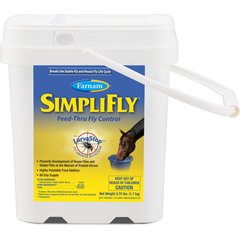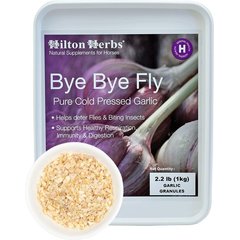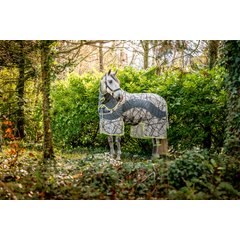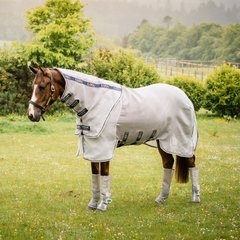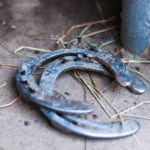Why Horses Swish Their Tails
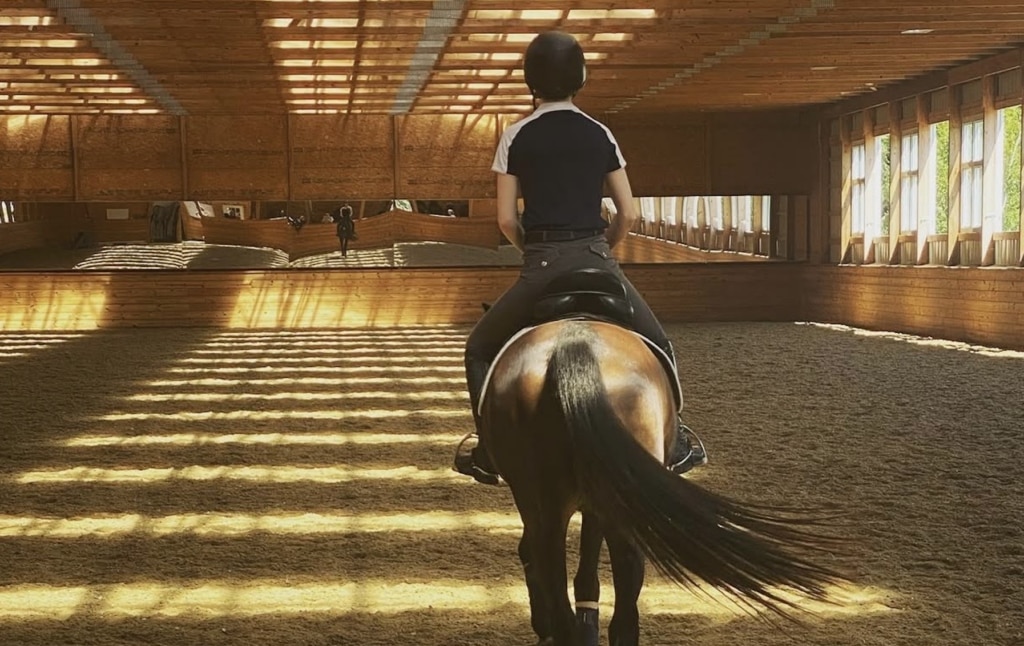
Photo by Emily Holowczak
If there’s one thing you’re certain to see in a pasture or paddock, it’s horses swishing their tails—especially in the summer. But why, exactly, do horses swish their tails?
The most common reason for tail swishing in horses is simple: they’re swatting flies. But similar tail movements may communicate emotions, pain, or unmet behavioral needs.
Key Takeaways
- When swatting away flies, a horse will have a relaxed tail that swishes in both directions.
- If a horse is in pain or scared, their tail may twitch side to side, move in a tight circular motion, or be held twisted to one side.
- Horses don’t wag their tails like dogs, but a horse’s tail can convey important information about their emotional state.
- Tail swishing when your horse is being ridden can mean they are irritated or in pain.
To learn more about why horses swish their tails, we spoke to equine veterinarian Richard L. Stevens, DVM, of Conejo Valley Equine in Thousand Oaks, California, along with researcher and animal behavior author Katherine Houpt, VMD, PhD, a professor emeritus in behavior medicine at Cornell University College of Veterinary Medicine.
4 Reasons Why Horses Swish Their Tails
There are four primary reasons horses swish their tails.
1. To Swat Those Pesky Bugs
Manure is the perfect breeding ground for “filth flies,” a group of species that includes both houseflies and stable flies. Houseflies irritate horses by feeding on their bodily secretions, including around their eyes. Stable flies bite and feed on horses’ blood.
Luckily, every horse comes equipped with a built-in flyswatter. Swishing horse tails are so effective at chasing flies away, many cultures historically used ornate horsehair fly whisks!
If your horse is swishing their tail to deter bugs, you’ll see an increase in the behavior during warmer seasons, unless you live in a place where flies are present year-round.
You may also notice other behaviors associated with flies, like stomping, headshaking, and fluttering skin in areas where flies land.
You might not see the bugs, though. Dr. Stevens notes that horses can be irritated by tiny, nearly invisible midges called no-see-ums. He explains, “They’re the ones that often feed at the head of the tail, as well as the mane, and cause quite a few skin conditions. Typical fly spray does not repel those.”
To deter no-see-ums, Dr. Stevens recommends applying Avon Skin-so-Soft to irritated areas and dressing the horse in a sweet itch blanket that covers the midline.
Fly bites on horses can transmit disease or cause parasitic infections. To keep flies from irritating or harming your horse, control flies on your horse, around the barn, and in manure.
Consider these tips when protecting your horse from flies:
- Fly traps target the vast majority of flies in the average stable that are not, at any given time, on a horse.
Recommended Product
- Absorbine Ultrashield Gold and Farnam Endure are longer-lasting topical sprays that protect your horse before the fly has a chance to bite.
Recommended Products
- Feed-through fly control supplements like Farnam SimpliFly and Solitude IGR stop flies from breeding in horse manure, if fed to all horses on the property.
Recommended Products
- Garlic supplements like Hilton Herbs’ Bye-Bye Fly Garlic Granules may deter flies by changing the smell and composition of horses’ sweat.
- Note: Don’t feed more than the recommended amount. In large quantities, garlic can cause horses to develop a condition called Heinz body anemia.
Recommended Product
- Fly masks and boots physically block flies from reaching your horse’s face and legs.
- To protect your horse’s body, try the especially durable TOUGH1 PVC Mesh Bug Barrier fly sheet.
Recommended Product
- Or consider the Amigo CamoFly sheet, which features an innovative pattern that may make it harder for flies to see your horse.
Recommended Product
- For especially sensitive horses, like those prone to sweet itch, a full-coverage fly sheet like the Rambo Protector may be necessary.
Recommended Product
- Flies biting you, too? Consider Zone Protects Horse & Rider spray, which is approved for your horse, your kids, and yourself.
Recommended Product
2. To Communicate and Express Themselves
Horses communicate mainly through body language, including tail movements. A horse with a loose, relaxed tail that sways softly and rhythmically from side to side is probably calm and content.
Rapid swishing of a tight or tense tail, on the other hand, says nothing good about a horse’s mental state. According to Dr. Houpt, “Certainly something is bothering a vigorously tail-swishing horse. The horse is annoyed about something. First rule out pain, then look at other reasons. Perhaps he doesn’t like the company he’s in.”
Always look at the whole horse when interpreting equine body language. Most often, tension or relaxation in the tail is mirrored in the rest of the body. Renowned equine bodyworker Linda Tellington-Jones advocates for tail handling and massage as a way to relieve whole-body stress.
3. To Indicate Discomfort or Pain
A tightly clamped or constantly wringing tail during exercise can indicate that a horse is in pain or unhappy with their rider.
To determine if a horse is in pain when ridden, Dr. Stevens suggests that owners review equine veterinary researcher Sue Dyson’s “24 Behaviors of the Ridden Horse in Pain,” and count how many of those behaviors are present during a short ride. Tail swishing, a clamped tail, and a tail held to one side are all on Dr. Dyson’s list.
If your horse seems to be in pain, Dr. Houpt has a homework assignment for you: “I recommend starting with showing a video of the behavior to your equine vet. Show the whole horse at all angles.” Capturing the tail-swishing on video makes certain that your vet sees what you see.
Another option, recommended by Dr. Stevens, is the “bute[phenylbutazone] test.” After consulting with your veterinarian, give a measured amount of bute before exercising the horse. If their tail wringing is halted or reduced with bute, it’s a strong indication that pain is contributing to the behavior.
Recommended Product
Kissing spine, ulcers, joint problems, or even poor hoof care, among other issues, can all manifest with tail wringing under saddle. To diagnose the underlying cause of tail swishing, your veterinarian may recommend:
- Flexions
- Nerve blocks
- X-rays
- Ultrasounds
4. Repeating a Learned or Habitual Behavior
If you’ve ruled out all other causes, tail swishing may simply be a habit. Dr. Stevens says, “It can absolutely be an addictive-personality horse’s boredom behavior.”
Tail swishing on its own isn’t harmful, so there’s no need to modify the behavior if you’re sure it’s a learned habit. However, addressing underlying boredom will improve your horse’s overall well-being.
Start by providing more turnout, more forage, and more socialization with a herd. If your horse is on stall rest, or if the friends/forage/freedom trifecta isn’t enough to keep them occupied, you might try offering these boredom-busting devices or treats:
- Mega balls are great for supervised play in turnout.
- Long-lasting snacks help break up the monotony of stall time.
- Two playful horses can get a lot of mileage out of a horse tug toy.
- A slow-feeder hay net helps extend mealtime, reducing boredom. For example, the QiK Hay Net Horse Slow Feeder has small holes that let out a little bit of hay at a time.
Recommended Product
To figure out what’s causing your horse’s tail swishing, look at the behavior in context. Observe the horse’s body language as a whole, and check their living space for irritating insects. Consider whether or not there’s a consistent trigger for the behavior, such as saddling or riding. And, of course, talk with your equine veterinarian promptly if you suspect that your horse is in pain.
FAQs About Horses Swishing Tails
What does excessive tail swishing in horses mean?
Excessive tail swishing when a horse is at rest generally means flies or other insects are bothering the horse.
Do horses wag their tails when happy?
No. Most side-to-side tail movements in horses indicate discomfort, irritation, or fear, though some individual horses may swish their tails when bored or relaxed.
Why do horses swish their tails when being ridden?
The most common reason for horses to swish their tails when ridden is pain or discomfort, such as from rough riding, poorly fitting tack, or an underlying condition such as gastric ulcers.

